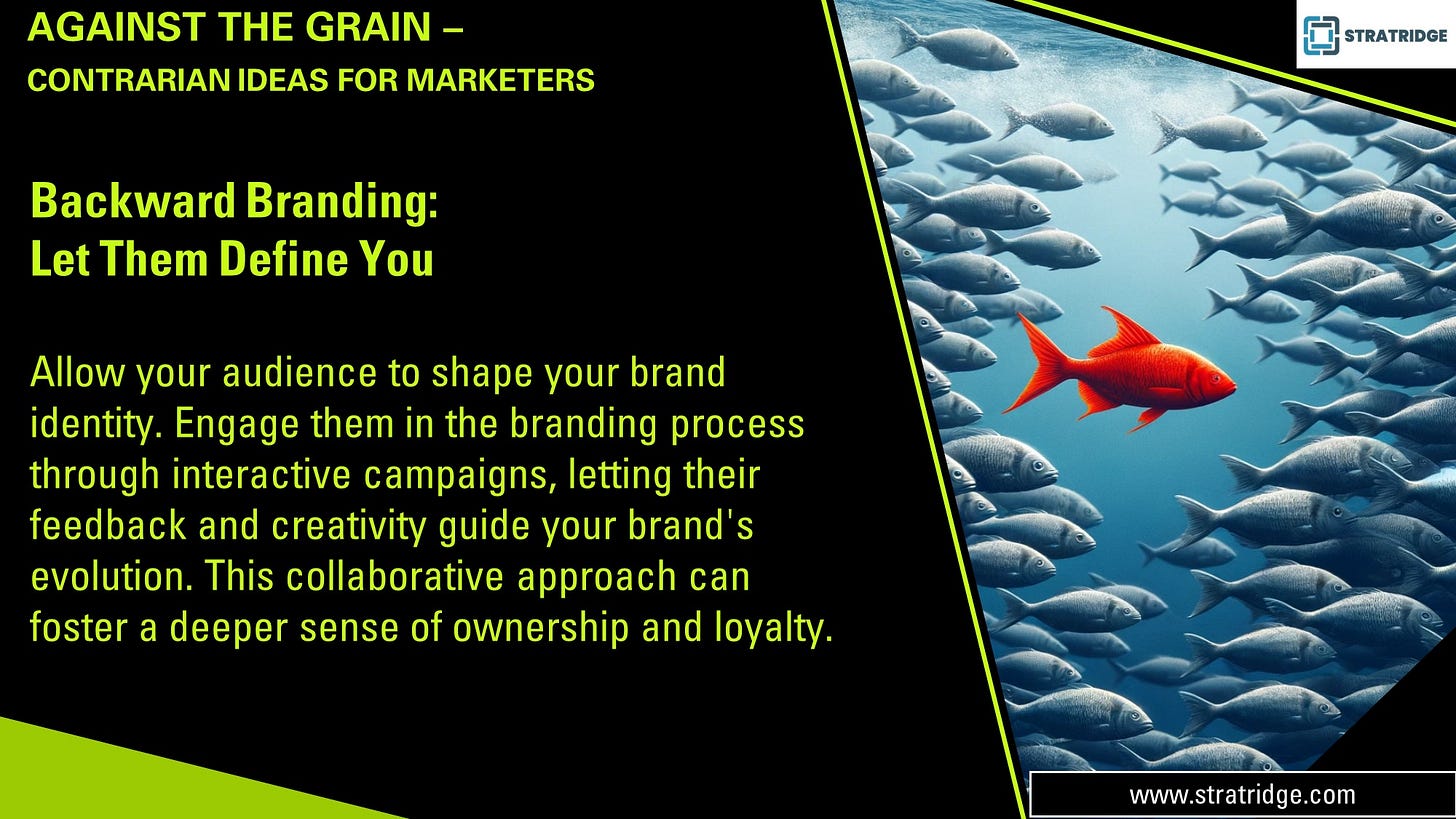In an era where consumer empowerment is more critical than ever, some brands are adopting a contrarian approach to marketing: "Backward Branding." Instead of dictating a fixed brand identity, these innovative companies invite their audience to actively participate in shaping their brand. This interactive process deepens customer engagement and fosters a unique sense of ownership and loyalty among consumers. By letting the audience define the brand, companies can create a dynamic, evolving identity that resonates more authentically with their market.
The Concept of Backward Branding
Backward Branding reverses the traditional roles in brand-consumer interactions. Traditionally, companies craft their brand identities internally and present them to consumers top-down. However, Backward Branding turns this model on its head by encouraging consumer input from the outset, allowing the audience's perceptions, feedback, and creativity to guide the brand's evolution.
Advantages of Backward Branding
1. Increased Consumer Engagement: Companies can increase engagement and interaction by involving consumers in the branding process. This engagement comes from a sense of participation and influence, as consumers feel their opinions genuinely impact the brand's direction.
2. Enhanced Brand Loyalty: When consumers contribute to the branding process, they develop a deeper connection and loyalty to the brand. This connection is much like a personal investment; consumers who help shape a brand are more likely to passionately support and advocate for it.
3. Greater Relevance and Authenticity: Allowing consumers to help define the brand ensures that the brand remains relevant to its audience's needs and desires. This approach also enhances authenticity, as the brand reflects actual consumer values and lifestyles, not just what marketers assume they value.
4. Agile Brand Evolution: Markets change rapidly, and brands must adapt quickly. Backward Branding allows for a more flexible brand evolution and is responsive to current consumer sentiments and trends. This adaptability can be a significant competitive advantage.
Implementing Backward Branding
1. Interactive Campaigns: Launch campaigns that invite consumer participation. These could be social media contests where consumers submit product design ideas, naming contests for new products, or online forums where brand values and messages are discussed and shaped.
2. Customer Feedback Systems: Develop robust systems for collecting and analyzing customer feedback. This feedback should measure satisfaction and gather insights into how consumers view the brand and what they believe it stands for. Advanced analytics can help decipher trends and patterns in this data, guiding strategic decisions.
3. Crowdsourcing Platforms: Utilize crowdsourcing to allow consumers to propose and vote on new product ideas, brand initiatives, or even advertising campaigns. This method generates practical ideas and engenders a communal sense of contributing to the brand's future.
4. Co-Creation Workshops: Organize workshops or events where loyal customers can co-create content with the brand, whether it's through crafting marketing messages or participating in product development sessions. These events can also serve as a rich source of qualitative insights.
Challenges of Backward Branding
1. Maintaining Brand Coherence: One challenge of Backward Branding is ensuring the brand identity remains coherent while incorporating diverse consumer inputs. This requires a careful balance between being open to consumer ideas and maintaining a consistent brand voice and vision.
2. Managing Expectations: Not all consumer ideas can be implemented, and managing expectations becomes crucial. Clear communication about how decisions are made and which ideas might be pursued can help manage potential disappointment.
3. Protecting Brand Equity: There is a risk that too much consumer control can dilute the brand's strength, primarily if conflicting views are strongly expressed. Brands must navigate these waters carefully to maintain equity while embracing consumer input.
Case Studies of Successful Backward Branding
1. Starbucks' "My Starbucks Idea" Platform: Starbucks launched an online platform allowing customers to submit ideas for everything from new drinks to operational improvements. These suggestions have been implemented, showing how consumer input can directly influence product offerings and company practices.
2. Doritos "Crash the Super Bowl" Contest: Doritos has repeatedly allowed consumers to create their own Super Bowl ads, with public voting selecting the winners to be aired. This generated significant engagement and produced highly original content that resonated with a broad audience.
Backward Branding represents a bold shift in how companies approach marketing and brand development. By valuing consumer input and allowing it to guide brand evolution, companies can foster deeper connections, enhance brand loyalty, and ensure their brand remains relevant and dynamic. This approach might not be suitable for all brands, but for those who dare, it can transform their relationship with consumers and set them apart in a competitive marketplace.
For more marketing tips, tutorials, templates, and tricks, please subscribe to https://www.stratridge.com


